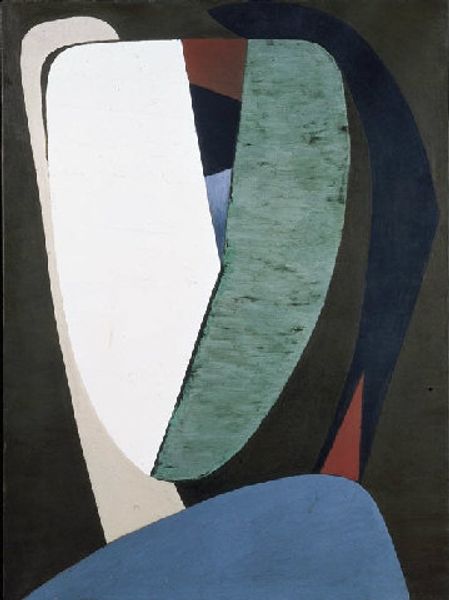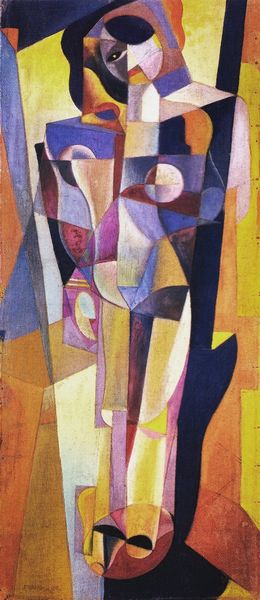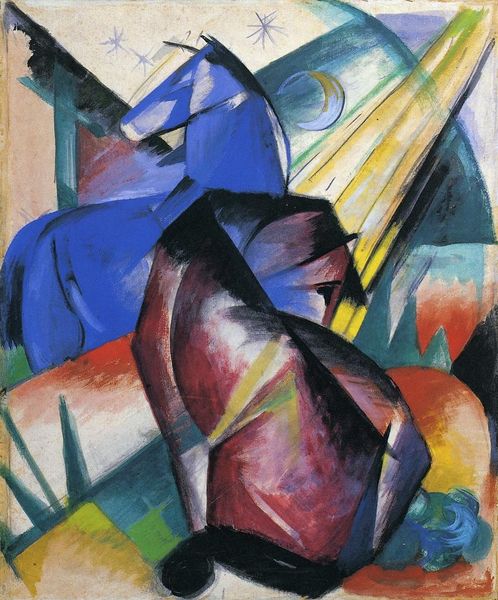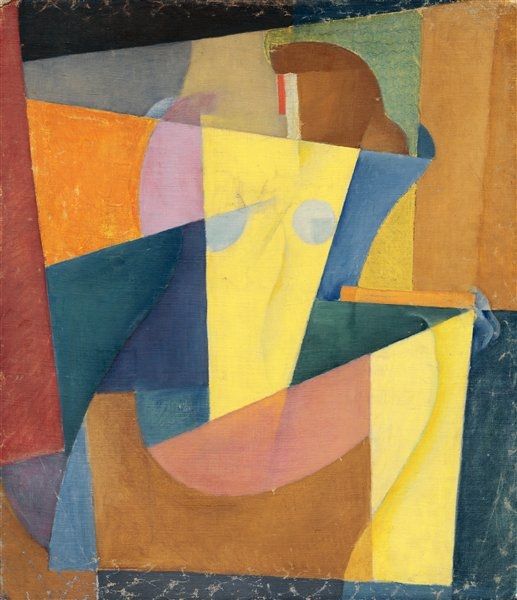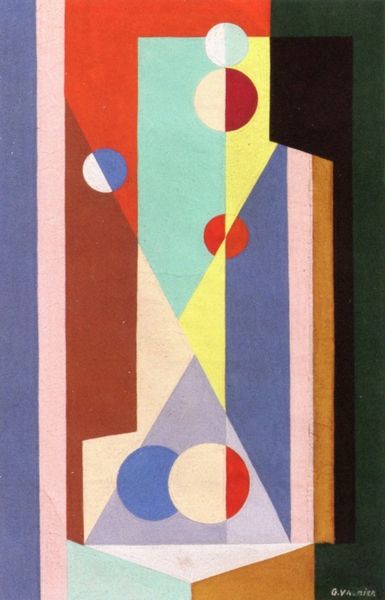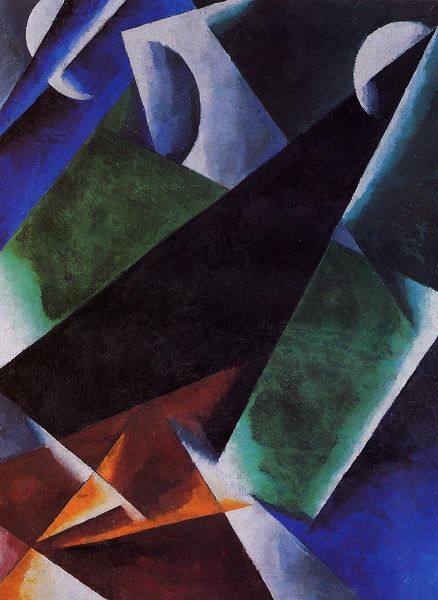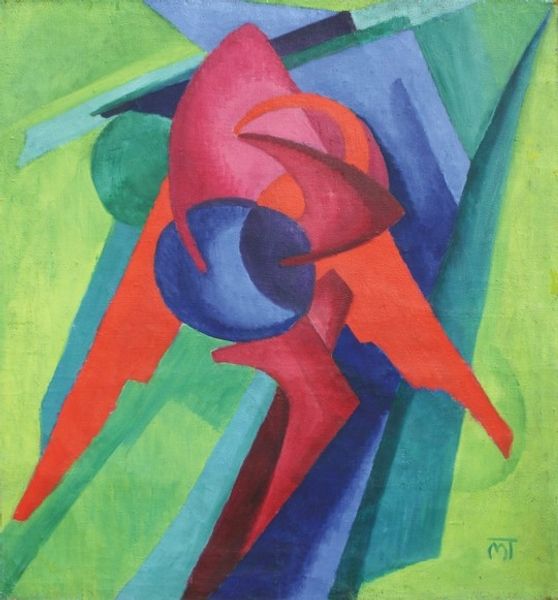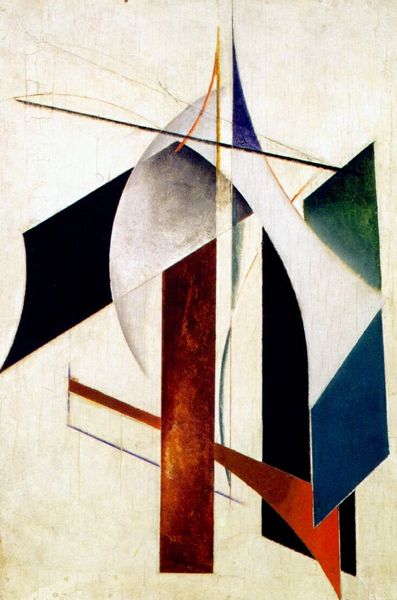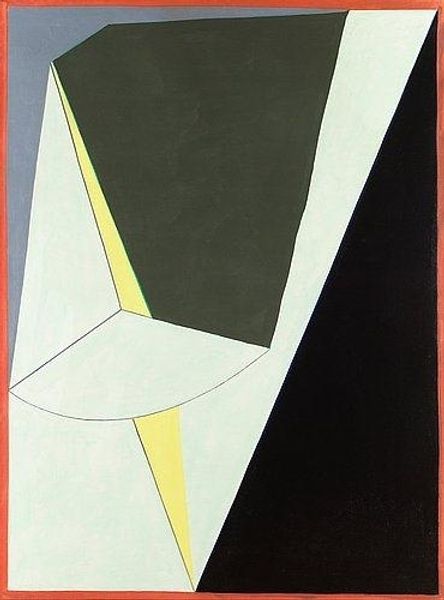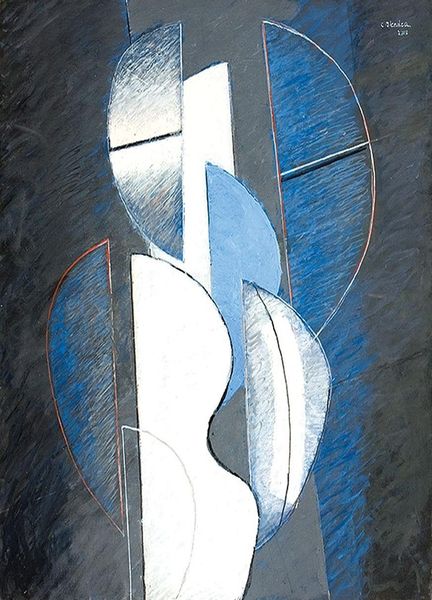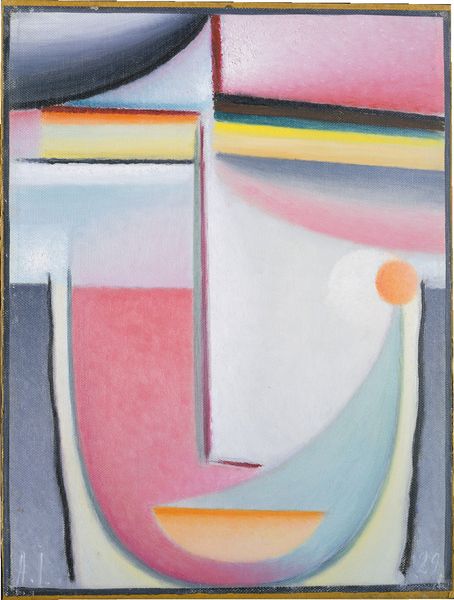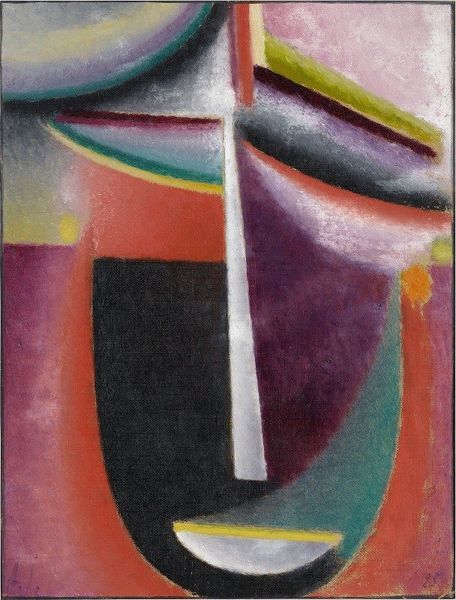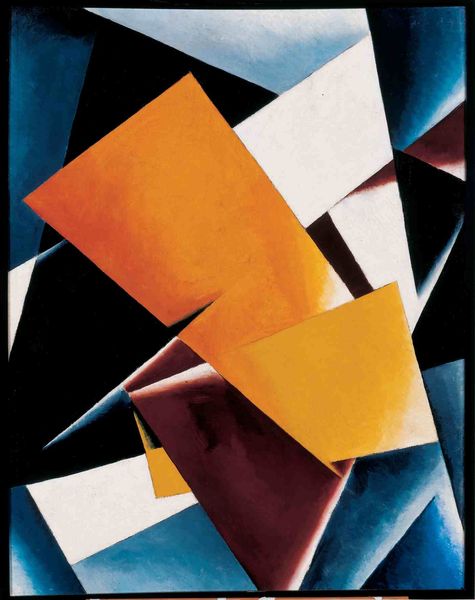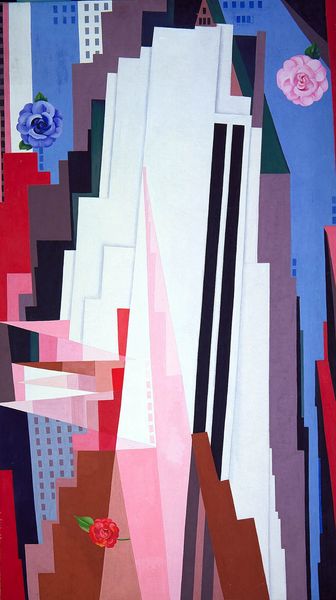
painting, oil-paint
#
organic
#
painting
#
oil-paint
#
form
#
acrylic on canvas
#
geometric-abstraction
#
abstraction
#
line
#
allover-painting
#
modernism
Copyright: Public domain US
Editor: So here we have Georgia O'Keeffe's "Black Spot No. 2," painted in 1919 using oil. The colours are so muted yet impactful and dynamic all at once, it feels monumental. What do you see in this piece that maybe I'm missing? Curator: Well, think about the context. O’Keeffe was working in a time when debates raged about what American art should *look* like, and how it should break free from European traditions. How do you think this painting contributes to that conversation? Editor: I guess by being so abstract, and not representing any one specific place or thing, it's carving out something new? But abstraction was already happening in Europe. Curator: True, but look at *how* O'Keeffe abstracts. This isn't purely formalist abstraction. Consider the title. "Black Spot." Spots appear in nature, blemishes, and also disease. How does this title change your view? Is this pure formalism or is she imbuing these forms with anxieties related to the body and nature, subjects that were often considered feminine? Editor: Oh, wow, that adds a whole new dimension! Suddenly the forms feel…vulnerable. Not just shapes but fragile systems. And women, especially during that time, were so often pathologized. Curator: Precisely. O'Keeffe takes these traditional associations, abstracting the feminine form, thus reclaiming it, and using it to represent the emotionality and modernity of the time. Now do you see her role differently in the trajectory of art? Editor: Definitely! It is no longer about aesthetic style, but an emotional, deeply considered statement! Curator: Right. Seeing how the artist situates herself can unlock so many exciting interpretations! Editor: This reframing gave me a richer perspective to truly appreciate the deeper significance.
Comments
No comments
Be the first to comment and join the conversation on the ultimate creative platform.
